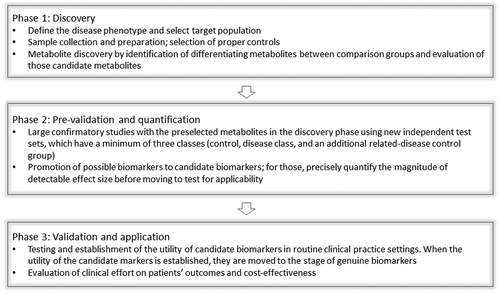Figures & data
Figure 1. Metabolites are most closely related to phenotype. Metabolomics is most closely related to phenotype. In addition, there are many fewer extant metabolites than genes, proteins, and transcripts which considerably simplify data acquisition and analysis.

Figure 2. Comprehensive small molecule biomarker detection in urine. Algorithm describing the metabolomic approaches for biomarker identification using complementary analytical techniques covering the whole metabolome or small molecule space. GC-MS: gas chromatography–mass spectrometry, LC-MS: liquid chromatography–mass spectrometry, NMR: nuclear magnetic resonance

